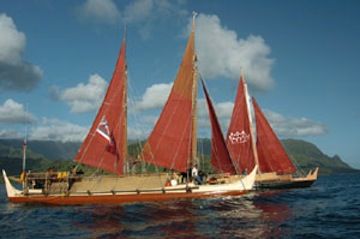360115-helping hand.jpg

A Polynesisan voyaging canoe. Credit: National Oceanic and Atmospheric Administration
It’s a couple of thousand miles from the islands of the central Pacific Ocean to New Zealand. That’s an easy jaunt for modern transportation. For the first people to make the trip, though, it was a journey of weeks. And it might not have been possible at all without a temporary change in climate.
The people of Polynesia were master navigators. They used the stars, the weather, and even ripples on the ocean to find their way across long distances. That allowed them to colonize many islands in the central Pacific.
Around the year 1200, though, they began sailing even farther — to New Zealand, and to Easter Island, off the coast of South America. Just how they made those journeys has been a puzzle, though. The normal winds in the Pacific would have been blowing against them, and there’s no evidence that they’d yet developed the ability to sail into the wind.
But some recent research says they might have had the wind at their backs. Researchers looked at tree rings, ocean sediments, and other factors to reconstruct climate conditions from the years 800 to 1600. They found that around the middle of that period, the prevailing winds might have switched directions for decades at a time.
The winds would have been especially good for sailing to New Zealand around the year 1200, and to Easter Island a few decades later. Those dates match the evidence of when the Polynesians colonized those new lands — suggesting that they had the wind at their backs as they journeyed across the vast Pacific Ocean.

